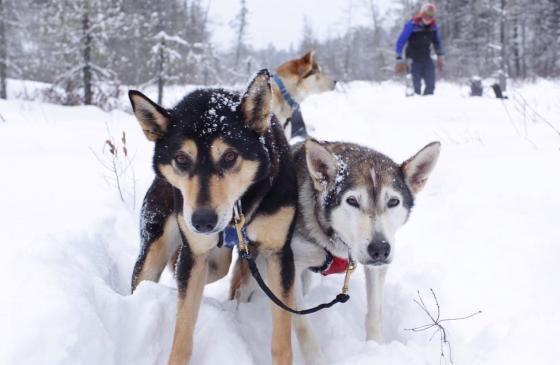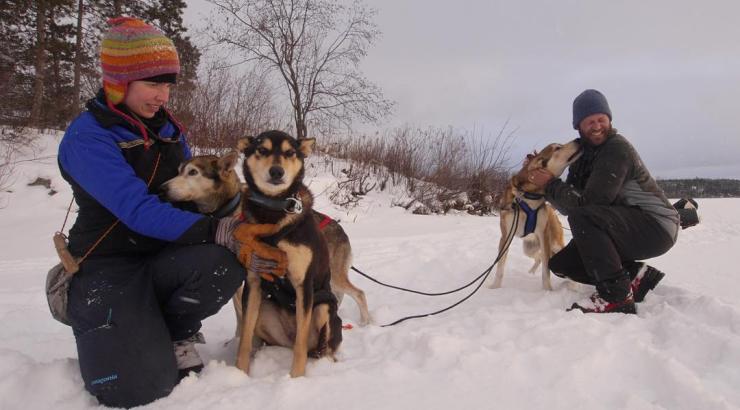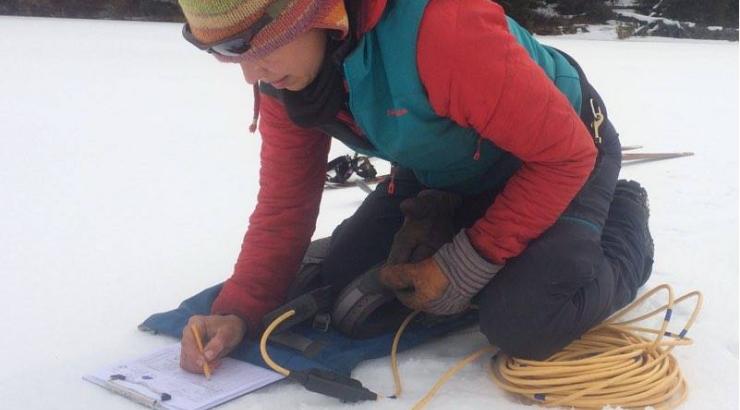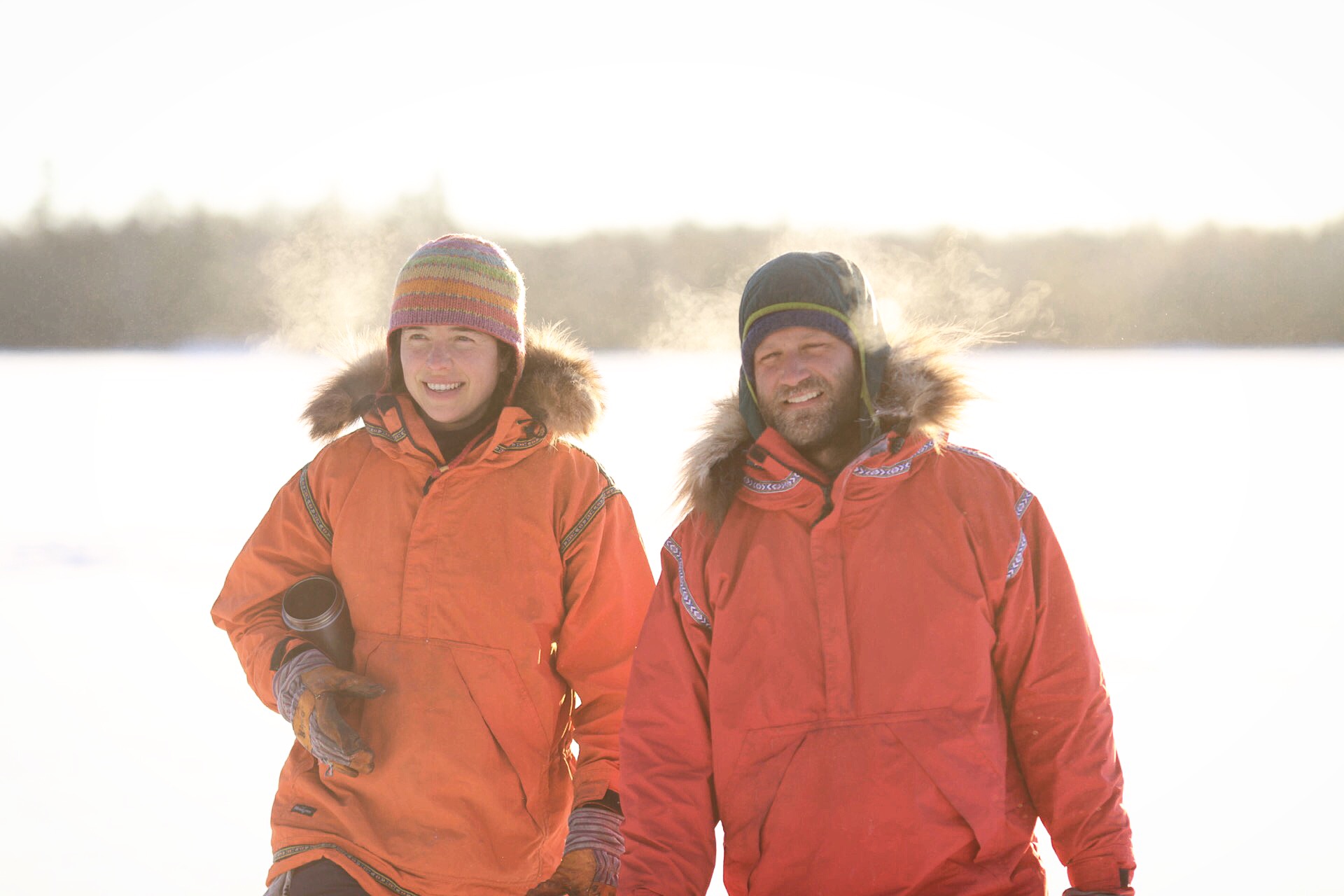 Already exhausted after 20 minutes, I come to an abrupt halt and slump against the harness of my overloaded pulk sled -- a brief rest from the arduous task of breaking trail through knee-deep fresh snow. Heart pounding, the deep silence of the winter wilderness echoes in my mind, deafening in it’s sheer nothingness. Even the sound of my labored breath and the crunch of snow underfoot seem stifled by the sound-deadening pillows of snow plastering the forest. It’s a strange feeling – one that’s only underscored by the physical and mental fog of the most severe cold I’d had in years. After pausing long enough to catch my breath and see my partner, Matt, closing in behind me, I cough a few times, lean into the harness, and trudge onward down the undulating path to Angleworm Lake and the Boundary Waters Canoe Area Wilderness.
Already exhausted after 20 minutes, I come to an abrupt halt and slump against the harness of my overloaded pulk sled -- a brief rest from the arduous task of breaking trail through knee-deep fresh snow. Heart pounding, the deep silence of the winter wilderness echoes in my mind, deafening in it’s sheer nothingness. Even the sound of my labored breath and the crunch of snow underfoot seem stifled by the sound-deadening pillows of snow plastering the forest. It’s a strange feeling – one that’s only underscored by the physical and mental fog of the most severe cold I’d had in years. After pausing long enough to catch my breath and see my partner, Matt, closing in behind me, I cough a few times, lean into the harness, and trudge onward down the undulating path to Angleworm Lake and the Boundary Waters Canoe Area Wilderness.
The heart of winter is certainly one of the most beautiful times to be in the wilderness, but it’s also a major test of skill and determination. Everything is harder, the stakes are higher, and there is little margin for error. Processing firewood becomes a daily necessity, gathering water requires an axe, and a lost glove can mean frostbite in the wrong conditions. All that aside, I knew more than anything else that it would be a tough week to film. In cold weather like this, exposed fingers quickly numb to the point of uselessness, batteries drain in minutes, and quick changes in temperature (such as entering a heated tent) fog lenses and expose delicate electronics to condensation. Snapping back into the moment, I heave the dead weight of the pulk sled up and over a small hill, looking up only to find a steeper, longer incline ahead. As we like to say in Minnesota, “Uffda.”
As I crest the hill, the silence is suddenly broken by sing-song commands and the barking of dogs, and I find myself face to face with a team of three Alaskan Huskies. In tow (quite literally) are my friends Amy and Dave Freeman, who appear happy, healthy and well tanned from a winter’s worth of snow-reflected sun. The Freemans are living out here in the BWCA for an entire year to draw attention to proposed sulfide-ore mines near the wilderness boundary, and we are visiting each season to help film the journey. Warm greetings are exchanged, and we have a lot to catch up on, but save any real conversation for the woodstove – the temperature is dropping, and we still have a few miles to go before we reach camp. Onward we go with a quickened pace, thankful for the lightened load as Tina, Tank and Acorn enthusiastically pick up our slack.
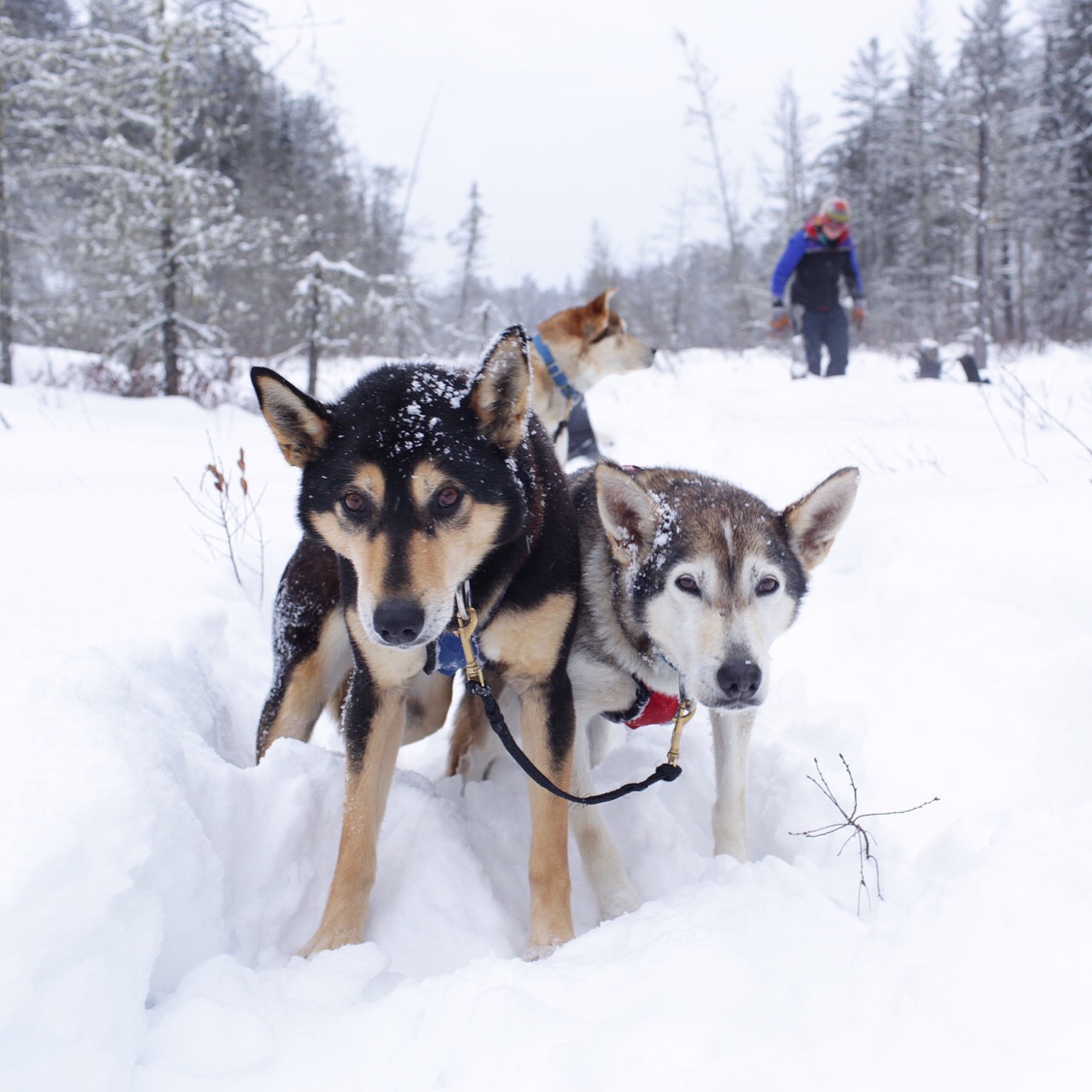
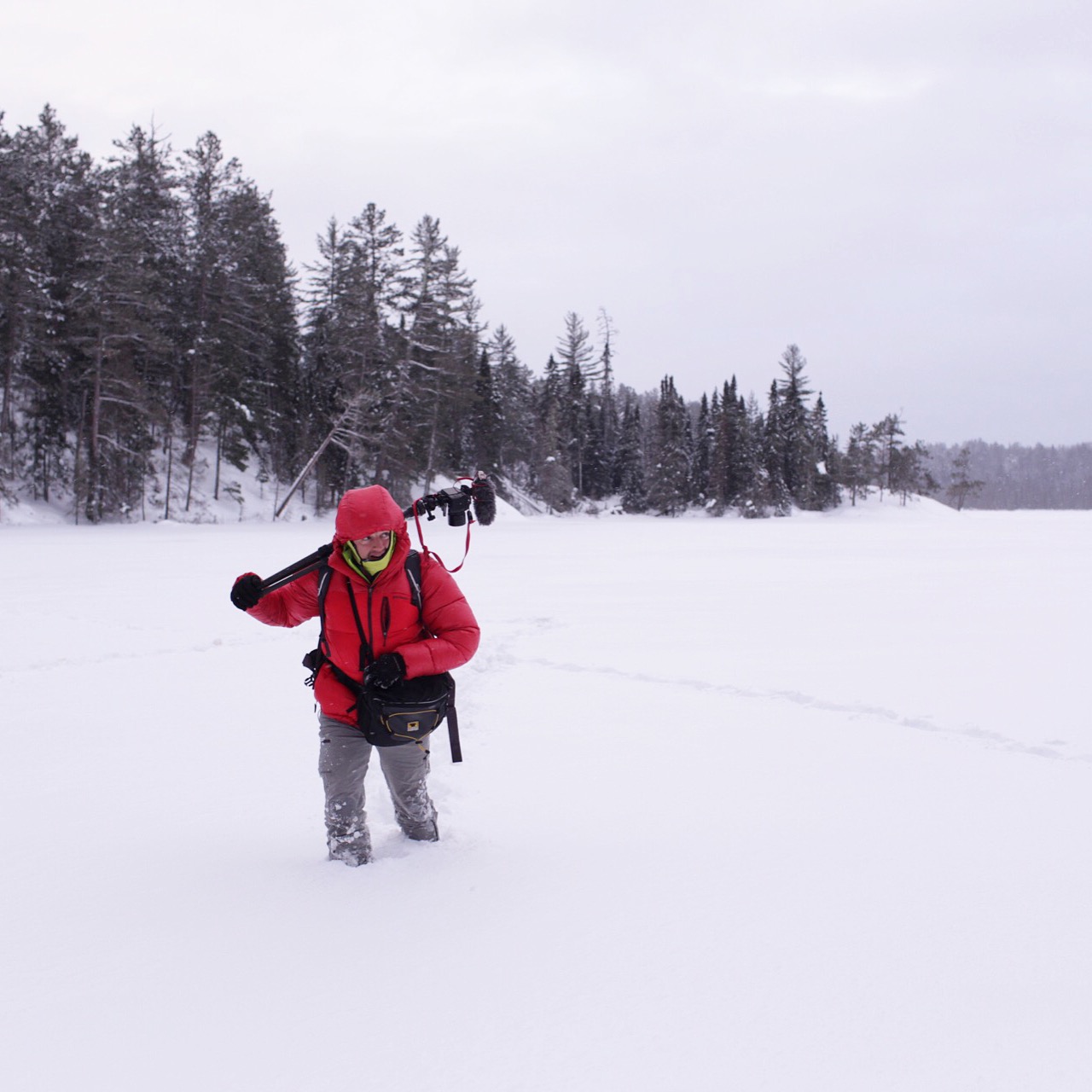
We soon arrive in camp - a low spot just off the lake, sheltered from the wind by an outcropping of granite and wreathed with snowcapped pines. Amy ties up the dogs and begins boiling water for their evening meal of chopped chicken, dog food and an extra hunk of lard to keep the inner fires burning until morning. Dave busies himself processing firewood (we’ll need to collect more before nightfall), while Matt and I unload our camera and camping gear from the pulk sleds. A stiff breeze sends plumes of spindrift across the frozen lake, heralding a cold snap with projected daily highs barely above zero, and overnight lows plunging well past -20°F for the next week straight.
As I step inside the Freeman’s tent, I’m overcome with a feeling of déjà vu. Save for the addition of hats and gloves hung near the stovepipe to dry, the tipi-shelter hasn’t changed a bit since our visit last October, more than three months ago. Sure, the Freemans have moved camp dozens of times since then, but the set-up is instantly familiar to me. In the very middle is a woodstove with a pot of water ready to boil, directly to the left of the door is a stack of firewood and birch bark, and in the back are the sleeping bags and pads, safe from snowy boots and errant sparks. The sweet scent of wood smoke permeates the air, and I’m happy to be a visitor in the Freeman’s home once again.
Later that night, we settle in around the stove for a dinner of venison tenderloin, a gift from my friend Andrew. The warm glow of the lantern illuminates the tent, and our jovial conversation inevitably trends toward all that has passed since our last visit: waiting out a long (and late) freeze up, tales of wolves fishing for spawning cisco, exchanging the canoe for a dog team and toboggans, and New Year’s Eve celebrations with visiting friends. Now halfway through their Year in the Wilderness, Amy and Dave seem to be doing well, and spirits are high. And they are especially happy for the added companionship of the dogs, on loan from a local musher named Frank Moe.
Tina, Tank, and Acorn each have their own unique personalities and strengths, and feel more like part of the team than hired paws. Acorn, the mother of Tina and Tank, is twelve years old but still a strong leader, even despite an injured tail that has her sharing the tent with us each night until it heals. The Year in the Wilderness is not her first foray into activism - she was also the lead dog in the 2012 Sled Dogs to Saint Paul, one of the early moments of advocacy around the sulfide-ore mining issue. Tina can be a bit skittish at first, but opens up after awhile and can pull hard in the harness all day. And Tank certainly justifies his name - at nearly twice the size of the other dogs, he serves as the anchor to the team, and really puts his weight into the uphill sections.
Eager to run every day, the only thing that really slows the team down is slush. Seemingly more often than not, perfectly good looking snow betrays us with large puddles hidden beneath the surface. Despite the bitter cold temperatures, the weight of recent snow has pushed the lake ice downward, displacing a layer of water that seeps up through cracks and settles unfrozen, insulated between the snow and ice. One moment we’re racing along, and the next, toboggans, skis, and paws alike are trapped in a quagmire of heavy slush that freezes instantly and requires a mandatory stop to scrape, chip, or lick off the ice before we can move on. But when the going is good, it’s an amazing experience to be cruising along the shoreline in the bright, crisp air of a bluebird winter day.
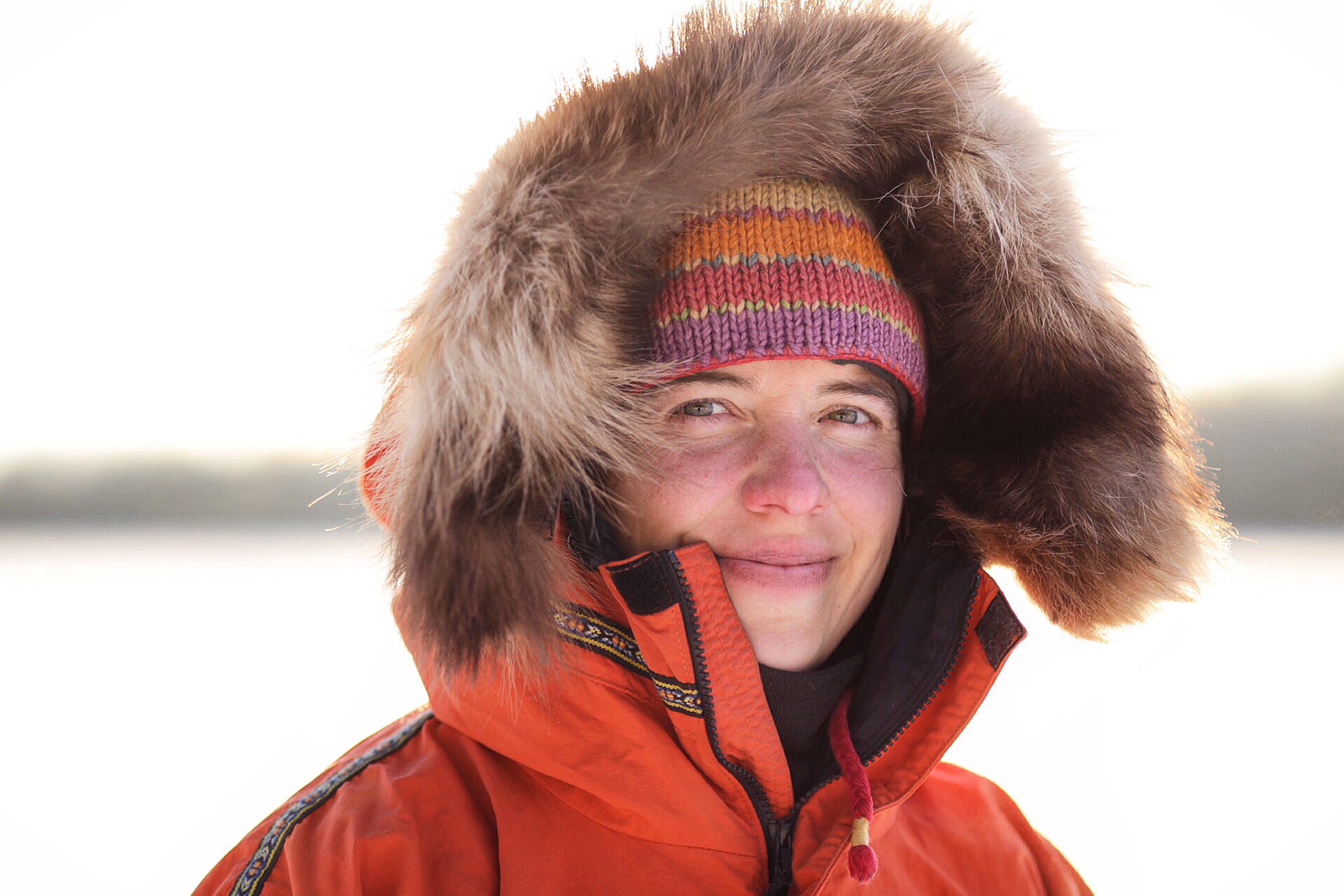
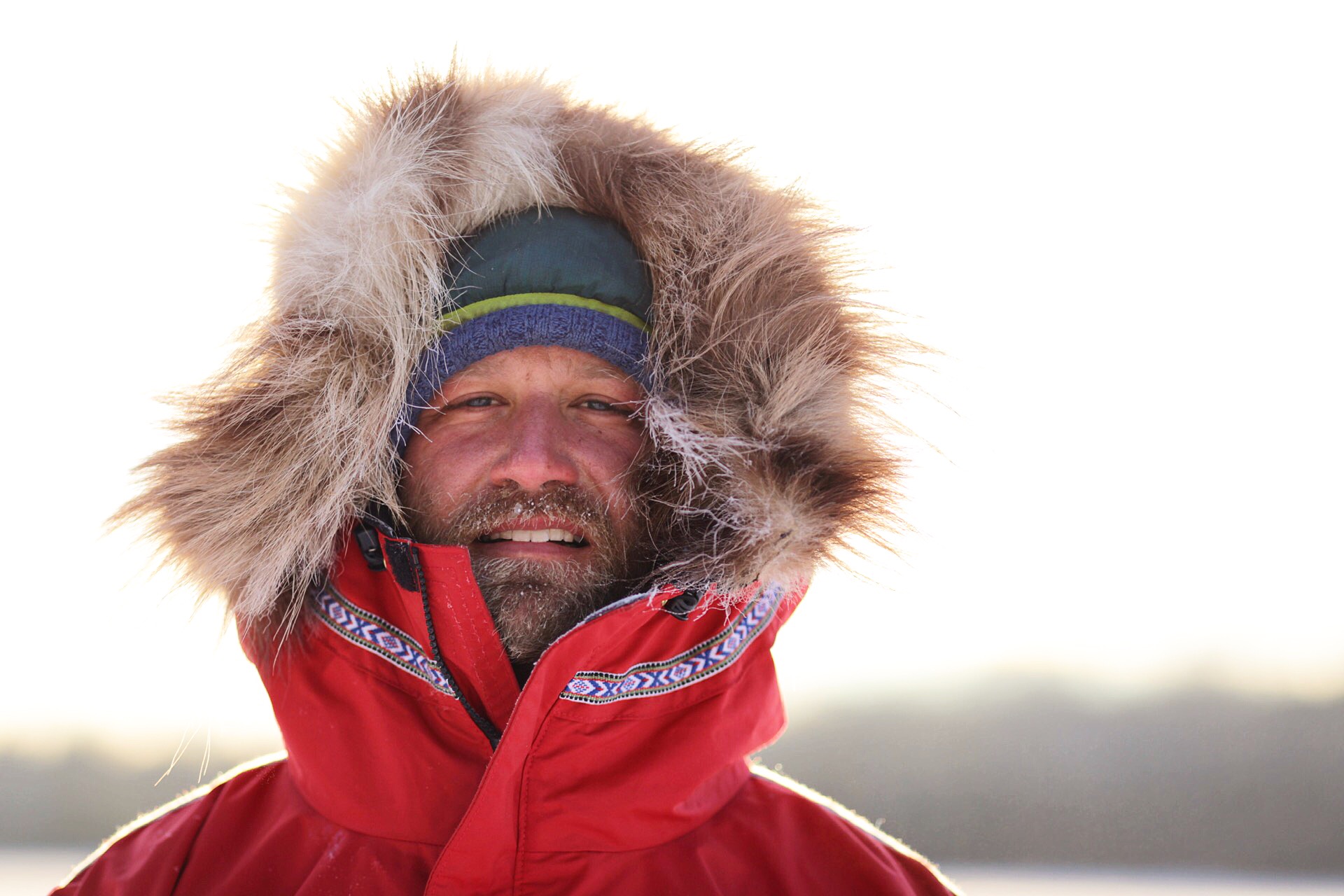
As the days progress and I find myself settling into life in the wilderness, the gravity of what Amy and Dave are doing out here truly begins to sink in. I have often thought about them since my last visit, but entering the rhythm and routine of their day-to-day brings me new perspective. I realize the extent to which I’ve generally taken for granted running water, electricity, and the warm climate of my adopted home in Southern California, while they have been out here the whole time - not only surviving, but thriving through the depths of the Minnesota winter. I think of all the ice holes chopped and pots of water boiled, the armfuls of wood gathered and processed to stay warm and cook, the many camps set up and taken down. The challenges are a little more immediate, yet the rewards are ever-present – moving efficiently with the dogs over fast snow, the satisfaction of a stove-cooked meal on a cold day, aurora borealis dancing wildly in the night sky. Life out here is still life, but it’s been boiled down to it’s very essence.
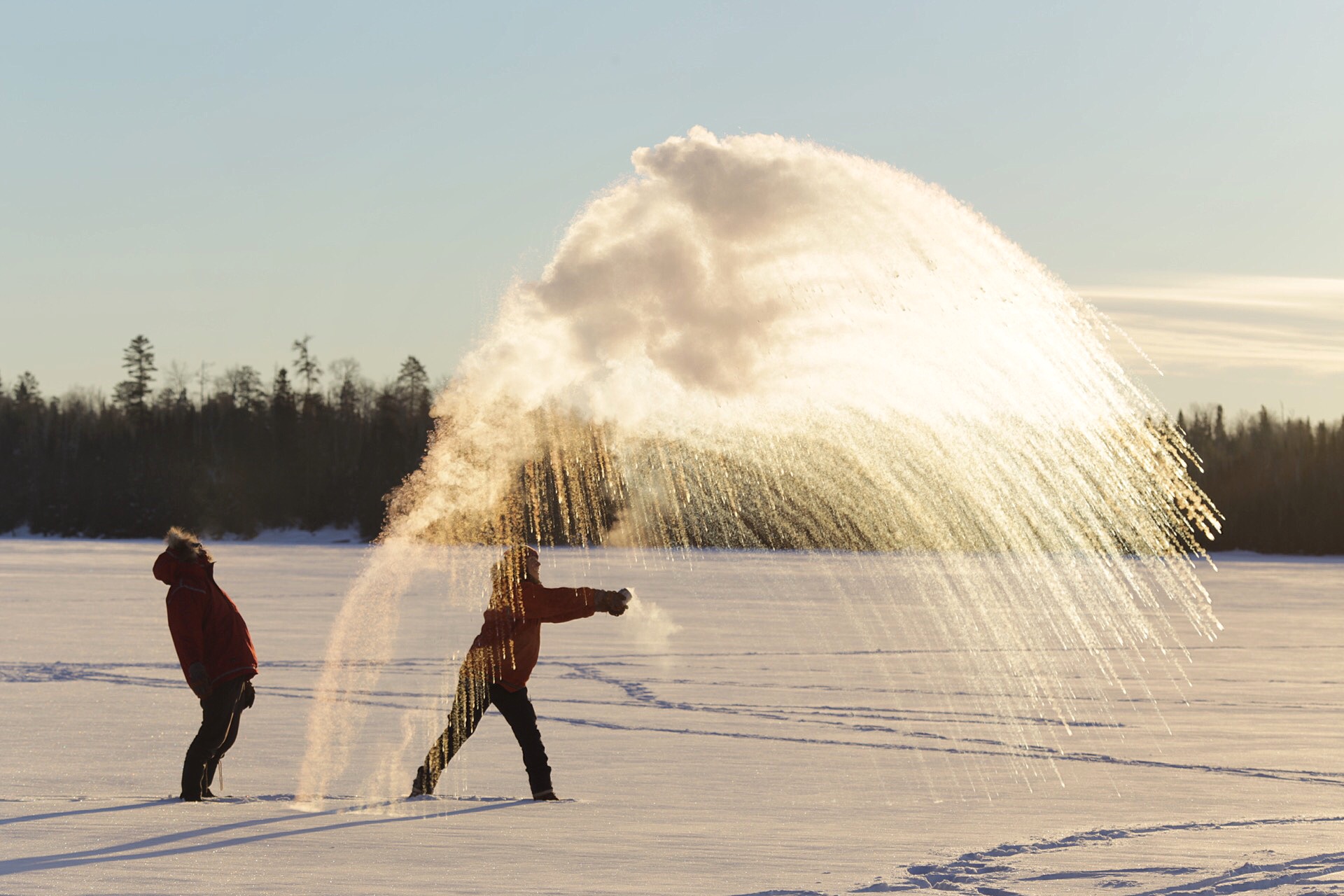 On the final night of our stay, the mercury plunges even deeper to a bone-chilling -27°F. In the morning we wake up cold, get the stove going, and boil up a pot of water. But before settling in for coffee and oatmeal, the four of us head outside for a science experiment. When it’s this cold outside, it’s said that a pot of boiling water tossed into the air will evaporate before hitting the ground. 3…2…1… BOOM! An explosion of white steam streams through the air like fireworks, backlit by the first rays of sunshine gracing the frozen expanse of Gun Lake.
On the final night of our stay, the mercury plunges even deeper to a bone-chilling -27°F. In the morning we wake up cold, get the stove going, and boil up a pot of water. But before settling in for coffee and oatmeal, the four of us head outside for a science experiment. When it’s this cold outside, it’s said that a pot of boiling water tossed into the air will evaporate before hitting the ground. 3…2…1… BOOM! An explosion of white steam streams through the air like fireworks, backlit by the first rays of sunshine gracing the frozen expanse of Gun Lake.
A morning like this highlights the beauty of the winter wilderness in all it’s glory, but like our week visiting the Freemans, the moment is fleeting. The spring thaw is just around the corner, bringing with it new challenges - waiting for open water, freezing spring rains, and hordes of biting black flies and mosquitoes. But there will also be new growth in the forest, lots of fish to catch, and the warmth of sunshine on bare skin for the first time in months. And witnessing every single moment of it all will be Amy and Dave - bearing witness to the beauty of the Boundary Waters throughout the year.
Nate Ptacek is a native of Wisconsin and former Minnesota resident. He is based in Ventura, California, where he works full time as a video editor for Patagonia. Nate filmed Dave and Amy Freeman’s Paddle to DC last year for the film, A Quest for Clean Water and is filming Bear Witness for A Year in the Wilderness.
